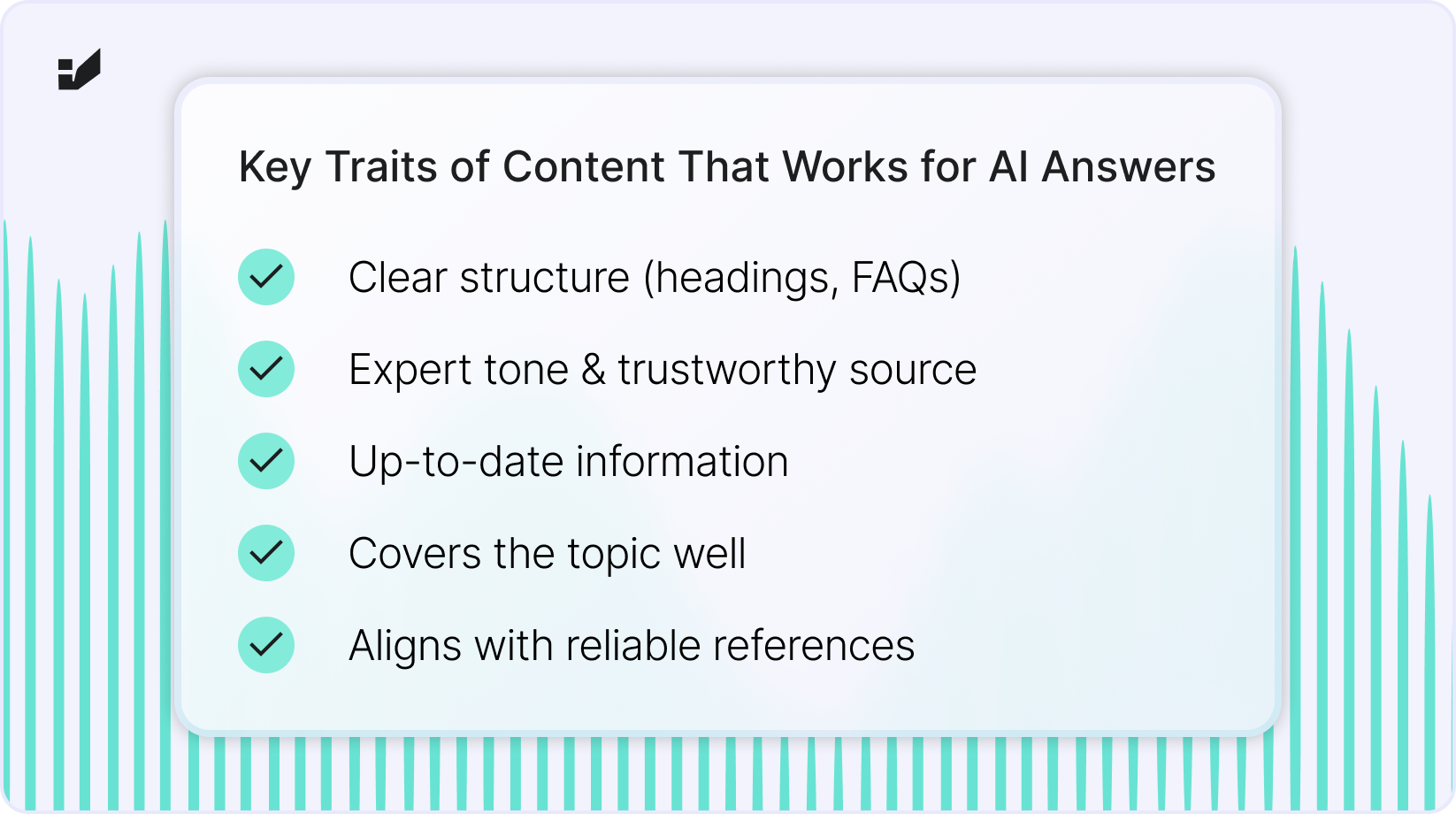Will Generative Engine Optimization replace SEO? What brands should expect
The rise of large language models, such as GPT-4, Claude, and Gemini, is changing how people search for information online.

Instead of using search engines in a traditional way, users are more often turning to conversational answers from AI assistants. This shift has led to a new area of focus: Generative Engine Optimization (GEO).
GEO doesn’t replace SEO, but it shows that the way people access content is changing. For brands, it’s becoming more important to understand how SEO and GEO work together to stay visible online.
Understanding generative engine optimization
Generative Engine Optimization (GEO) is a new way of thinking about online visibility. Instead of focusing only on ranking in traditional search results, GEO is about making content easy to understand, reference, and use by generative AI systems like ChatGPT, Google Gemini, or Microsoft Copilot.
As features like Google’s AI Overviews start to replace classic link listings with summarized answers, showing up in AI-generated responses becomes more valuable. GEO calls for content that’s not just accurate, but also clear, well-structured, and written in a way that helps language models process and highlight it. For brands, it’s no longer only about rankings—it’s about being part of the response.
Is GEO a new traffic channel?
Yes, but it works differently from traditional organic search. GEO isn’t about keyword rankings. Instead, it depends on how relevant, accurate, and trustworthy your content is. Users no longer need to click a link to get answers. AI tools can give them the information directly.
Because of that, brands mentioned in AI-generated content, either by name or indirectly, can get visibility in more search situations. GEO adds a new layer to how people discover content, especially in the early stages of their decision-making process.

Can we optimize for AI-generated search (AI SERP)?
Yes, and it’s becoming more important. While large language models don’t rank pages the same way Google does, they still rely on certain signals when deciding which sources to mention or use. These include:
- Clear structure and formatting (like summaries, FAQs, or bullet points)
- Topic expertise and domain credibility
- Up-to-date and accurate information (especially when browsing is enabled)
- Alignment with other trusted sources
Instead of chasing exact-match keywords, GEO focuses on semantic depth and content that covers a topic thoroughly. Content that answers broad questions in a clear, concise way performs better.

How can brands monitor their presence in generative responses?
There’s no direct equivalent of Google Search Console for AI tools. Tracking visibility in generative answers still requires manual or custom methods. Common approaches include:
- Prompt testing – entering key questions into tools like ChatGPT, Gemini, or Perplexity to check for mentions
- Custom scripts – using APIs like OpenAI or Claude to automate queries and scan results for brand references
- Qualitative tracking – observing how the brand is mentioned, in what context, and whether the information is accurate
Both tone and accuracy matter as much as raw visibility.
Do generative mentions drive conversions? How can we measure it?
Mentions in AI-generated answers can shape how people see your brand and influence their decisions. But tracking direct conversions is harder than with traditional SEO. That’s because users often get what they need without clicking a link, so tools like Google Analytics might not capture the interaction.
Still, there are ways to estimate the impact. You can:
- Watch for a rise in branded searches to see if more people are looking you up after exposure in AI results
- Track unusual spikes in direct traffic, which might be linked to brand mentions in generative answers
- Analyze how your brand is mentioned in responses—tone, accuracy, and context can all affect perception
These signals help build a clearer picture, even without click-based data.
How to strategically align SEO and GEO
GEO and SEO don’t cancel each other out. They work better when combined. To make the most of both, consider:
- Content structure – Use rich snippets, FAQs, and clear headers. These help both search engines and AI tools understand your content.
- Build authority – Publish under verified authors, cite trustworthy sources, and show credibility. These signals matter for both SEO and GEO.
- Focus on entities – Go beyond keywords. Think in terms of entities, relationships, and how topics connect.
- Work together – SEO teams and AI specialists should collaborate instead of working in silos.
Content that ranks well in search and is easy for AI to interpret is more likely to show up in both types of results.

SEO vs. GEO: A side-by-side comparison
| Aspect | SEO | GEO |
| Optimization target | Search engine ranking | Generative model inclusion |
| Interaction type | Click-through-based | Zero-click, conversational interface |
| Ranking logic | Algorithms (PageRank, E-E-A-T, etc.) | Probabilistic selection based on embeddings |
| Measurement tools | GSC, GA, rank trackers | Prompt testing, brand monitoring scripts |
| Priority formats | Long-form content, metadata, and backlinks | Concise summaries, factual snippets, citations |
| Main use case | Navigational and transactional search | Informational and advisory search |
Accuracy, hallucination, and the risk of misinformation in generative outputs
One of the main concerns with generative tools is their tendency to produce false or partially incorrect information, especially when pulling from outdated or unreliable sources. Brands can end up misrepresented, misquoted, or linked to claims they never made. This can be especially damaging in industries where accuracy is crucial, such as finance, healthcare, or law.
To lower the risk, it’s important to keep your content accurate and current across all channels you control. Monitor how your brand shows up in AI-generated responses and correct false information when you can. Clear, well-structured source content and strong digital authority make it less likely that AI will distort your message.

Will GEO replace SEO?
GEO probably won’t replace SEO anytime soon. Here’s why:
- Different user needs: People still use traditional search engines when they want clear, specific answers, like comparing products, finding local businesses, or going straight to a website. AI-generated responses work better for general overviews or open-ended questions.
- AI isn’t fully reliable: Language models can be helpful, but they still make mistakes, rely on outdated information, or invent facts. That makes them useful, but not dependable enough to replace verified search results.
- GEO tools are still limited: Unlike SEO, GEO doesn’t have strong analytics or standard tools for tracking performance. Measuring success is still a work in progress.
- It’s part of search, not a replacement: Search engines like Google are adding generative answers to their results, but they’re not replacing their core systems. Traditional rankings still play a key role.
GEO is still new. The systems for tracking and improving it are just getting started. While platforms like Google are blending AI into search, they haven’t dropped the foundation that SEO is built on. Right now, GEO works alongside SEO, not in place of it.

What should brands expect – and how to prepare
Search is shifting a bit with AI in the mix, so brands will need to adjust.
First, visibility won’t rely just on keyword rankings. It will depend more on how clearly and consistently a brand shares its expertise. Your content might show up in AI-generated responses, even if no one clicks a link. That means user journeys will often start and end within the AI itself.
Second, tracking performance will get harder. Tools like Google Analytics or Search Console won’t tell the whole story. Teams will need to watch for indirect signs, like a rise in branded searches, unusual spikes in direct traffic, or changes spotted through prompt testing.
Third, brand accuracy will matter more than ever. Since AI can misquote or twist facts, brands need to keep their content clear, structured, and reliable. This helps language models get it right and protects your reputation.
Finally, GEO isn’t a passing trend. It’s a deeper shift in how people discover information. Brands that adapt early by creating content that works for both users and AI will stand out. Those who wait may stay accurate, but stay invisible.
Final thoughts
Generative search is changing how people discover and interact with information. Traditional SEO helps you rank in search engines, but GEO makes your content easier for AI tools to understand and reference. To stay visible, brands need to think beyond keywords and focus on clarity, authority, and structure. Those who adapt to both worlds will reach users at more points in their journey.



